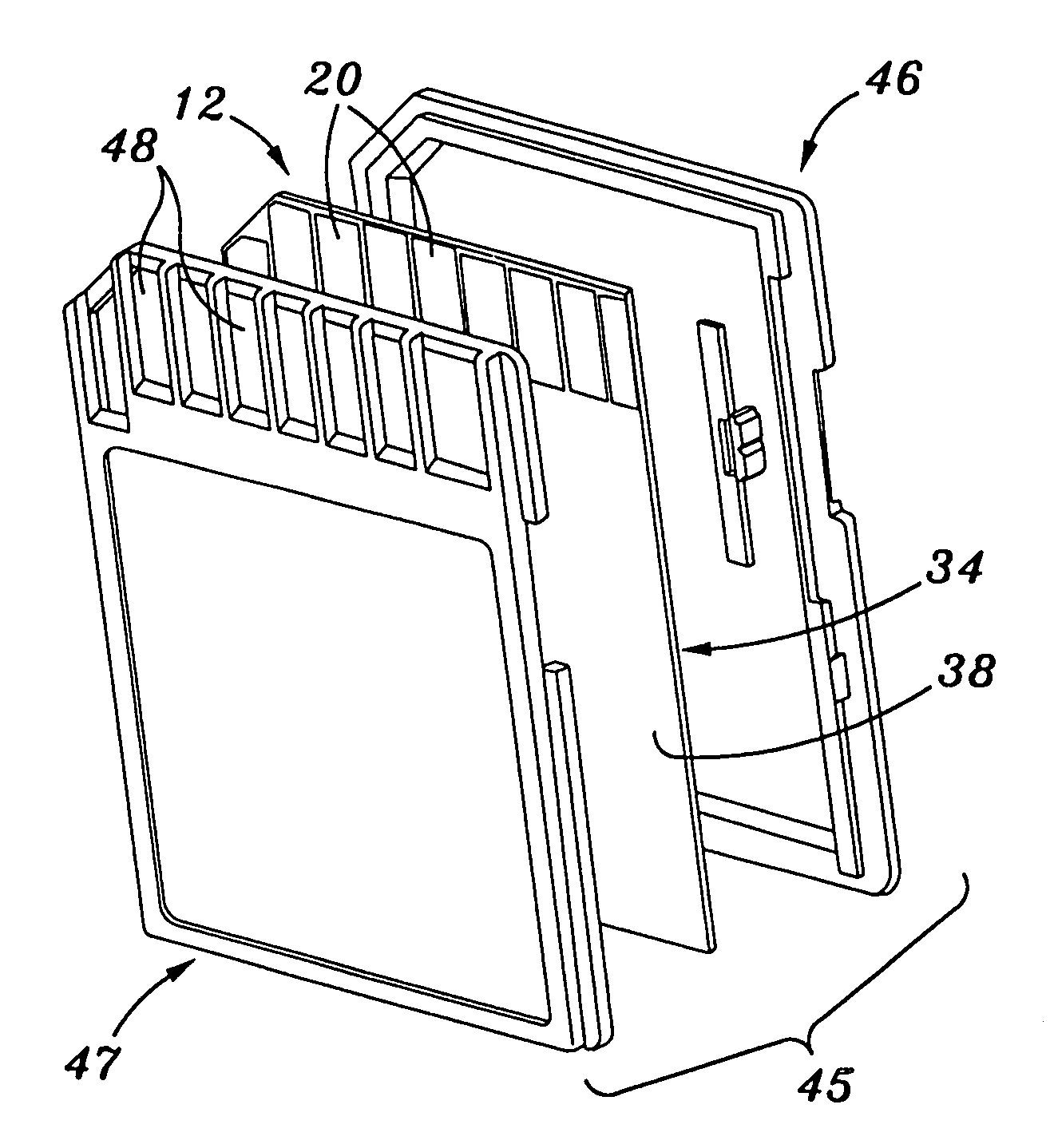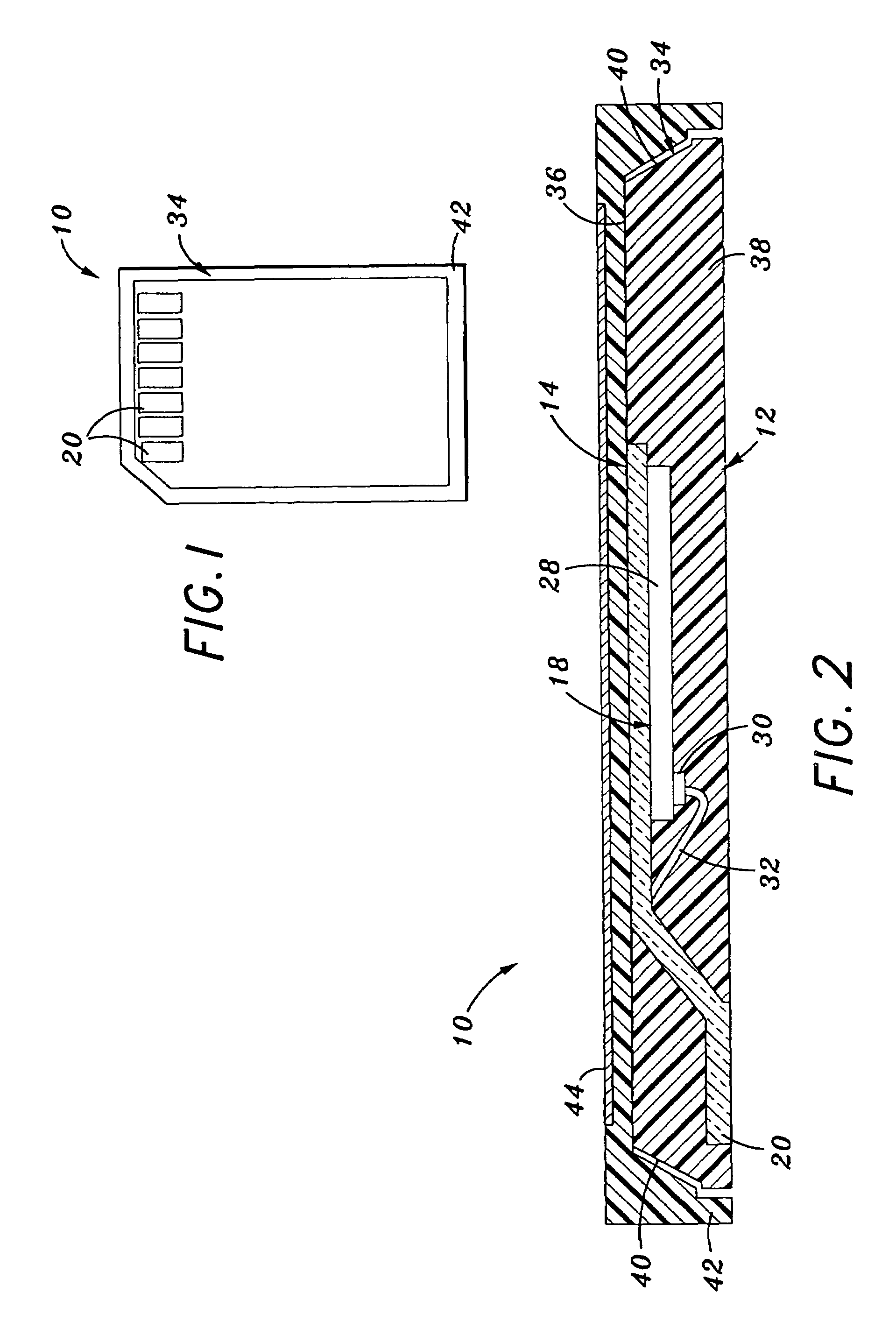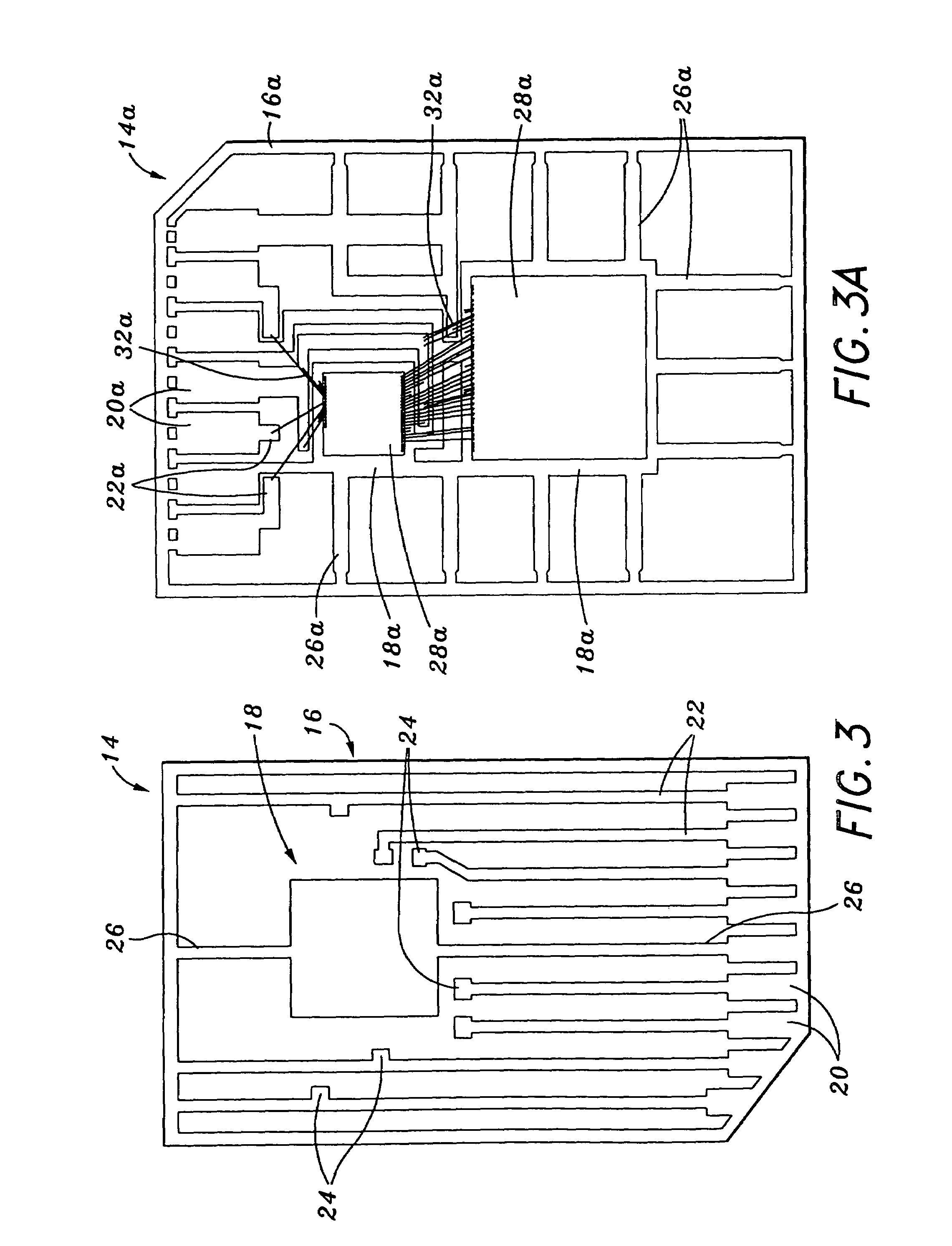Die down multi-media card and method of making same
a multi-media card and die-down technology, applied in the field of memory cards, can solve the problems of adding weight, thickness, stiffness and complexity of modules, and sometimes causing structural deficiencies or problems in molding or encapsulation processes
- Summary
- Abstract
- Description
- Claims
- Application Information
AI Technical Summary
Benefits of technology
Problems solved by technology
Method used
Image
Examples
first embodiment
[0019]Referring now to the drawings wherein the showings are for purposes of illustrating preferred embodiments of the present invention only, and not for purposes of limiting the same, FIGS. 1 and 2 depict a memory card 10 constructed in accordance with the present invention. The memory card 10 includes a circuit module 12. The circuit module 12 itself includes a leadframe 14 which is shown in a preliminary, unbent state in FIG. 3 and in its final, bent state in FIG. 2. The particular structural attributes of the leadframe 14 will be described below. As shown in FIGS. 1 and 2, the memory card 10 including the circuit module 12 has a form factor particularly suited for use in a multi-media card memory application. However, those of ordinary skill in the art will recognize that the circuit module 12 of the present invention may also be used in alternative memory card formats including secure digital cards (SDC), compact flash (CF), memory stick, and other small form factor memory car...
second embodiment
[0031]As indicated above, the memory card 10 has the form factor of a multi-media card. As also indicated above, the circuit module 12 may be employed in memory card format other than a multi-media card format. For example, as shown in FIG. 4, the circuit module 12 can be incorporated into a secure digital card 45 constructed in accordance with the present invention. In the secure digital card format, first and second skins 46, 47 are included, with the first, top skin 46 being attached to the circuit module 12 and covering approximately the upper half thereof, and the second, bottom skin 47 also being attached to the circuit module 12 and covering approximately the lower half thereof. The top and bottom skins 46, 47 are typically ultrasonically welded or otherwise adhered to each other, with the top skin 46 covering the top surface 36 of the body 34 and the bottom skin 47 covering the bottom surface 38 of the body 34. The bottom skin 47 is formed to include one or more windows 48 w...
PUM
 Login to View More
Login to View More Abstract
Description
Claims
Application Information
 Login to View More
Login to View More - R&D
- Intellectual Property
- Life Sciences
- Materials
- Tech Scout
- Unparalleled Data Quality
- Higher Quality Content
- 60% Fewer Hallucinations
Browse by: Latest US Patents, China's latest patents, Technical Efficacy Thesaurus, Application Domain, Technology Topic, Popular Technical Reports.
© 2025 PatSnap. All rights reserved.Legal|Privacy policy|Modern Slavery Act Transparency Statement|Sitemap|About US| Contact US: help@patsnap.com



